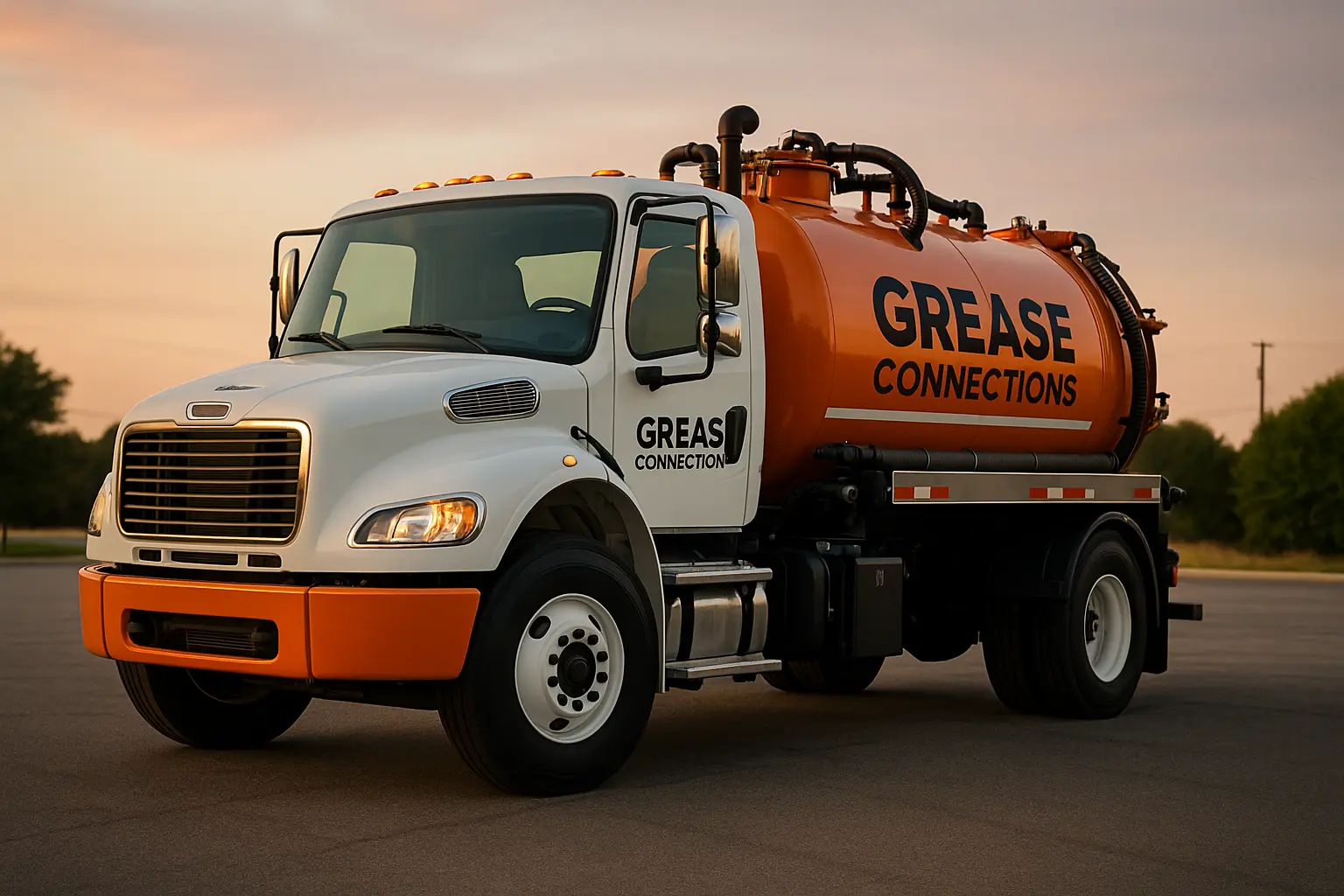Table of Contents
Storms Don’t Cancel Service, They Complicate It
Hurricanes shut the doors on almost two thirds of Florida’s small restaurants that fail to prepare, a pattern seen after Ian and Irma. Outdoor fryer oil tanks add a second risk: a single 300 gallon spill can trigger fines, fire code violations and weeks of lost revenue. This guide translates state food safety advisories and FEMA tank anchoring science into an action plan a line cook can follow while the chef secures payroll. After ten minutes of reading, you’ll know exactly when to strap a drum to concrete, who to call for a midnight oil pickup, and how to pass the post storm inspection the first time.
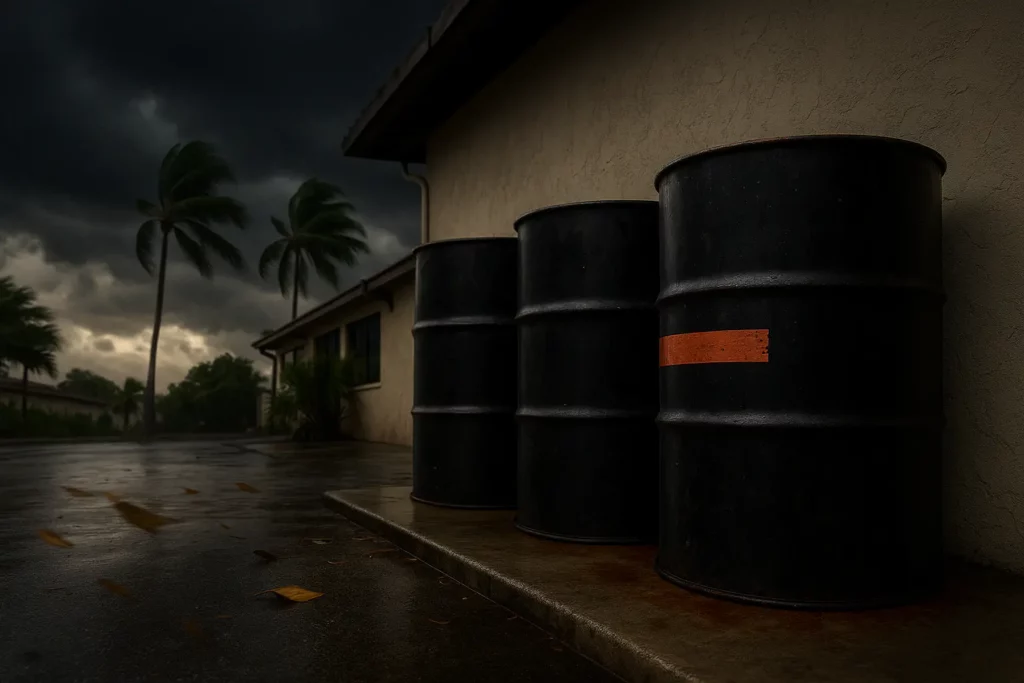
Know The Miami Dade Rules Before The Wind Rises
Miami Dade adopts Florida Department of Agriculture directives that classify used cooking oil as a regulated waste; outside containers must be labeled, leak proof and surrounded by secondary containment. Fire marshals also treat fresh frying oil above 60 gal as a Class IIIB combustible liquid, requiring tanks to be 10 ft from ignition sources. Failing any one of these clauses, even during an emergency, voids insurance coverage and can halt reopening permits. Print the relevant code excerpts now and store them in a waterproof sleeve near the back door muster point. Regulators will appreciate the foresight, and your reopening clock starts the moment they see documented compliance.
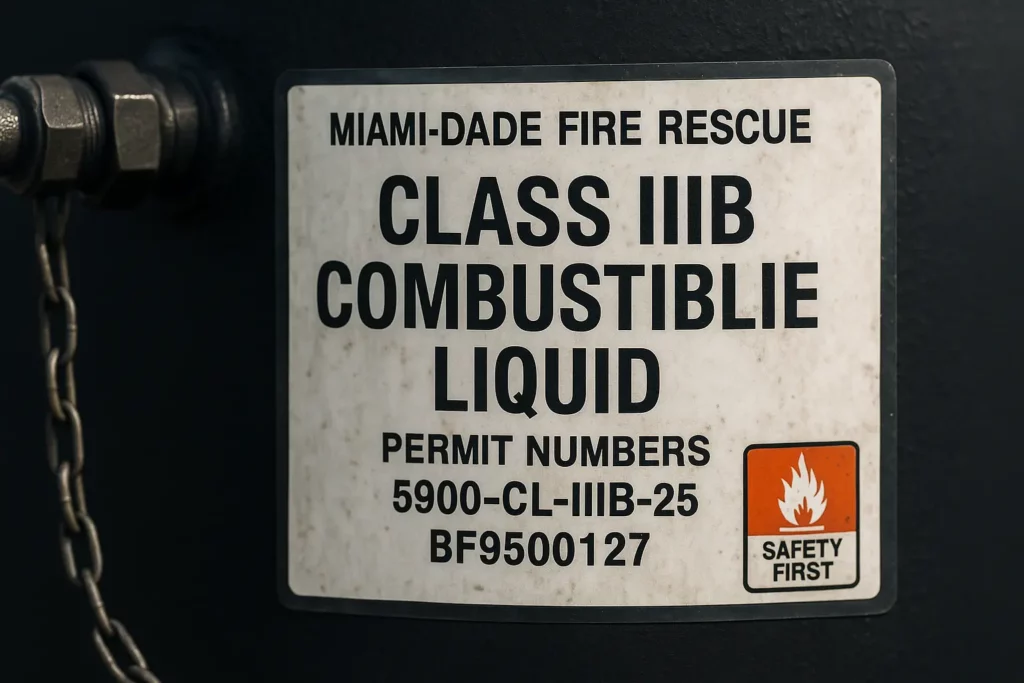
Timeline: 72 Hour Pre Landfall Checklist
| Time Stamp | Action | Goal | Confirmed By |
|---|---|---|---|
| 72 h | Inventory oil volume; schedule hauler | Lower buoyancy & theft risk | Manager |
| 48 h | Strap drums/tanks to concrete or ground anchors | Prevent float off in surge | Maintenance |
| 36 h | Elevate vent & fill lines 12 in above expected surge | Block floodwater entry | Shift lead |
| 24 h | Seal vents, close valves, replace gaskets | Stop spills if tank tips | Fry cook |
| Landfall 6 h | Kill power to pumps; lock lids | Eliminate ignition sources | Owner |
Checklist merges UF/IFAS food safety timing with industrial tank farm practice used by petroleum operators before Category 3+ events.
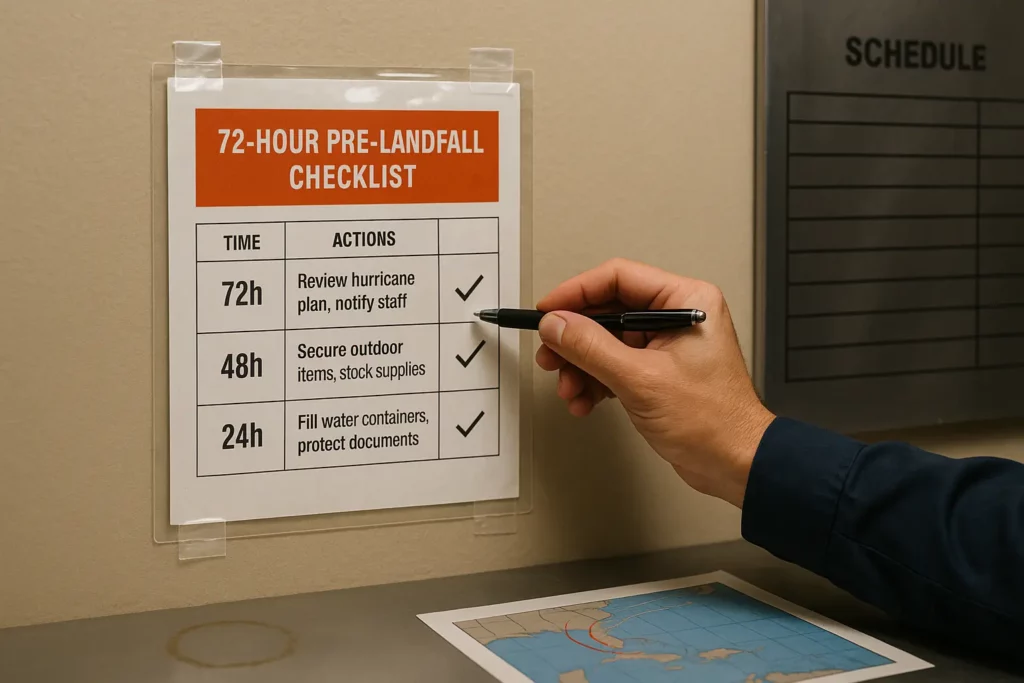
Anchor Every Container: Drums, Caddies, Big Tanks
FEMA tests show an empty 55 gallon drum can float away in less than 18 in of floodwater, ripping supply lines and slamming into nearby cars. Bolt small drums to 3 in thick concrete pavers using stainless eye bolts and ratchet straps. For 70 gal caddies and 140 gal tanks, add two ground anchors rated at 2,500 lb each, tightened with turnbuckles as outlined in the Building America disaster resistance guide. Large 300 gal wheeled tanks require a welded steel cradle fixed to the pad plus wheel chocks.
Quick test: if you can’t rock the unit by hand after strapping, surge water can’t move it either.

Seal Vents, Elevate Lines, Add Secondary Containment
Most storm spills start when floodwater rushes down low mounted vents, pressurizing the tank until caps pop. Extend each vent and fill tube to 24 in above projected storm surge; PVC slip couplings work in a pinch. Next, lay a 4 in berm of absorbent boom around the pad to catch stray grease. Finally, snap shut quick release lids and verify gaskets are pliable, not cracked. These three micro tasks take under fifteen minutes yet satisfy both EPA spill control policy and Tank Depot’s hurricane tank prep recommendations.
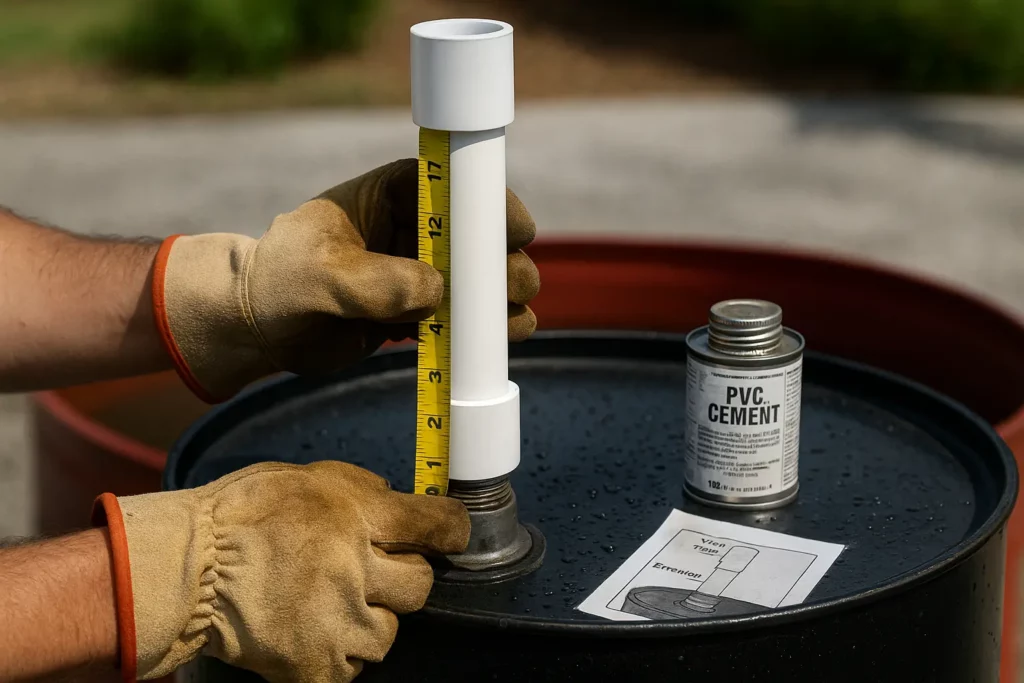
Arrange Emergency Oil Pickups & Backup Power
With haulers overwhelmed, book a “storm route” pickup when you hit the 72 hour mark; most reputable grease recycling companies in Miami guarantee removal up to 18 h before landfall for customers on their priority list. If volume is too low for haul away, decant fresh oil into food grade drums and store indoors; used oil can be filtered and kept in sealed jugs for biodiesel partners after the storm. Connect pump carts to a portable inverter generator kept on a 2 ft platform to avoid splash flood. One gallon of gasoline powers a ½ hp transfer pump long enough to empty a 140 gal tank, saving thousands in cleanup fees.
After The Eye Passes: Inspection & Recovery
Do not restart fryers until every outdoor container clears a four step inspection: check strap tension, look for sheen inside berm, open vent caps for water, then sample oil for turbidity. UF/IFAS food safety guidance warns that oil exposed to even trace floodwater can harbor pathogens and must be discarded. Photograph each tank (date stamp on) for insurance, then contact Miami Dade Environmental Compliance within 24 h if any spill exceeded one gallon. Most fines are waived when self reported and cleaned with approved absorbents, another reason to store extra pads in the dry goods closet.
Container Playbook: Choose The Right Shield
A 55 gal black drum costs little and fits tight alleys but must be emptied weekly to beat theft and buoyancy. The 70 gal square caddy on wheels rolls through standard 36 in doors yet tips easily unless anchored on both axles. A 140 gal rectangular tank with lid hits the sweet spot for QSRs, built in secondary containment and forklift pockets reduce handling injuries. High volume kitchens lean on 300 gal tanks with integrated pump carts; add spring loaded cam locks so staff can connect hoses one handed during evacuation drills. Pick a vessel that matches weekly oil turnover, then buy two anchor kits, because spare parts disappear the morning a storm gets named.
Case Study: Little Havana Diner Kept Cooking
When Hurricane Elsa veered toward Miami in 2024, a 40 seat diner on Calle Ocho followed this guide: they drained 60% of their oil two days out, strapped their 140 gal tank to a fresh poured pad, and raised vents above knee height. Surge water filled the street but never breached the berm. Power came back after 30 hours; because the oil stayed clean, breakfast service resumed with generators and a skeleton crew. The owner recouped two days of revenue others lost and earned a shout out in the local paper for “serving cafecito through the storm.” Preparedness wasn’t luck, it was process.
Chef’s Quick FAQ: 90 Second Answers
- Is anchoring really required for small drums? Yes, FEMA warns even 30 gal canister displacement can rupture gas lines and spark fires.
- How high should I raise vent pipes? At least 12 in above predicted surge; double that near Biscayne Bay where wave action adds splash height.
- Can I reuse oil that sat in a sealed tank during a blackout? Only after a clarity test and 180 °F heat hold; discard if cloudy or if water pops on contact per UF/IFAS food safety rules.
Get Your Free Hurricane Readiness Audit Today
Every kitchen is different, but the storm shows no favorites. Schedule a 15 minute site walk through with our certified fryer oil safety team. We’ll map anchor points, measure vent heights and preload your account for emergency pickups, no retainer required. Call (305) 204-5207 or click “Audit My Tanks” now. Acting before the next advisory means frying again while competitors scramble. Secure your oil, secure your livelihood.

